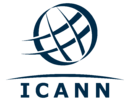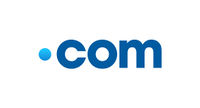Main Page: Difference between revisions
No edit summary |
New article of the week - gTLD Auctions |
||
| Line 20: | Line 20: | ||
<br /><div style="color: #FFF; background-color: #0d8323; padding: 5px 10px; border: 1px solid #466f81;"><big>Article of the Week</big></div><div style="padding: 10px;"> | <br /><div style="color: #FFF; background-color: #0d8323; padding: 5px 10px; border: 1px solid #466f81;"><big>Article of the Week</big></div><div style="padding: 10px;"> | ||
<big><b>[[ | <big><b>[[gTLD Auctions]]</b></big> | ||
<br /> | <br /> | ||
In the case where multiple entities apply for a single ICANN new gTLD, two main models -- ICANN Auctions and Private Auctions -- will be used to determine the winner of each contention set. Exceptions are made in the case of geographic and community-based applicants, who receive preferential treatment over other applicants. ICANN condones private auctions, as it has encouraged applicants to resolve contention themselves, presumably through buy-outs, partnerships, and auctions. ICANN offers its own auction model as a last resort. All proceeds from gTLDs auctioned off under ICANN's auction model will go to ICANN as "excess funds" that will be redistributed at a later date, in ways that are yet to be determined. | |||
<strong>([[ | <br /><br /> | ||
<div style="float:right;"><small><strong>Related: [[ | <strong>([[gTLD Auctions|Read the full article...]])</strong> | ||
<div style="float:right;"><small><strong>Related: [[New gTLD Program]] - [[Applicant Guidebook]] - [[Community TLD]]</strong></small></div><div style="clear: left;"></div></div> | |||
<br /><div style="color: #FFF; background-color: #466f81; padding: 5px 10px; border: 1px solid #0d8323;"><big>Latest Feature</big></div><div style="padding: 10px;"> | <br /><div style="color: #FFF; background-color: #466f81; padding: 5px 10px; border: 1px solid #0d8323;"><big>Latest Feature</big></div><div style="padding: 10px;"> | ||
Revision as of 19:30, 27 January 2014
Much thanks to our sponsors for all of their continued support!
gTLD Auctions
In the case where multiple entities apply for a single ICANN new gTLD, two main models -- ICANN Auctions and Private Auctions -- will be used to determine the winner of each contention set. Exceptions are made in the case of geographic and community-based applicants, who receive preferential treatment over other applicants. ICANN condones private auctions, as it has encouraged applicants to resolve contention themselves, presumably through buy-outs, partnerships, and auctions. ICANN offers its own auction model as a last resort. All proceeds from gTLDs auctioned off under ICANN's auction model will go to ICANN as "excess funds" that will be redistributed at a later date, in ways that are yet to be determined.
(Read the full article...)
.com
.com is one of the first TLDs to be used on the Internet's Domain Name System; it was originally intended for commercial purposes, though there are no current restrictions limiting it to commercial entities. It was introduced in 1985 by IANA, which is responsible for the overall coordination and management of the DNS; the organization was led by Jon Postel at the time. On January 28, 1986, the entities overseeing the DNS met and restructured its makeup to correspond to 8 TLDs, including .com, the others are: .gov (government), .edu (American higher education), .mil (American military), .org (organization), .int (international, specifically NATO relations), .net (sites related to the Internet itself), and .bitnet (computers on the BITNET network).
Explore the history of the world's most popular TLD with this article.
(Read the full article...)
- gTLD Auctions
- Closed gTLDs
- Sort All TLDs by Priority
- 了解ICANN 和 新gTLDs计划
(Chinese micro-site)









